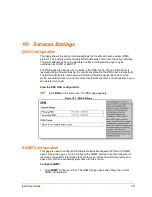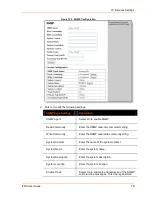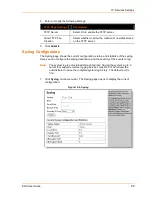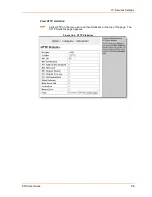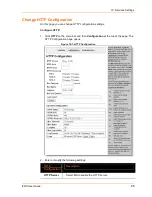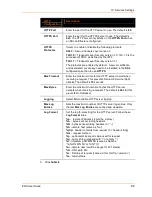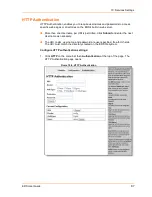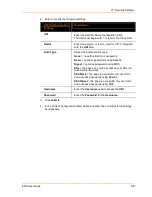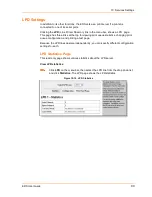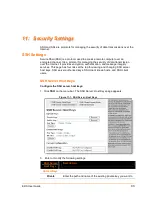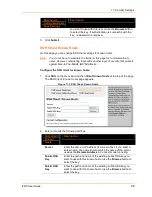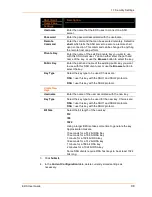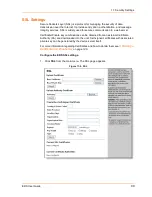
10: Services Settings
EDS User Guide
86
HTTP
Configuration
Description
HTTP Port
Enter the port for the HTTP server to use. The default is 80.
HTTPS Port
Enter the port for the HTTPS server to use. The default is
443. The HTTP server only listens on the HTTPS Port when
an SSL certificate is configured.
HTTPS
Protocols
Select to enable or disable the following protocols:
SSL3 = Secure Sockets Layer version 3
TLS1.0 = Transport Layer Security version 1.0. TLS 1.0 is the
successor of SSL3 as defined by the IETF.
TLS1.1 = Transport Layer Security version 1.1
The protocols are enabled by default. A server certificate
and associated private key need to be installed in the SSL
configuration section to use HTTPS.
Max Timeout
Enter the maximum time for the HTTP server to wait when
receiving a request. This prevents Denial-of-Service (DoS)
attacks. The default is 10 seconds.
Max Bytes
Enter the maximum number of bytes the HTTP server
accepts when receiving a request. The default is 40 kB (this
prevents DoS attacks).
Logging
Select On to enable HTTP server logging.
Max Log
Entries
Sets the maximum number of HTTP server log entries. Only
the last Max Log Entries are cached and viewable.
Log Format
Set the log format string for the HTTP server. Follow these
Log Format rules:
%a - remote IP address (could be a proxy)
%b - bytes sent excluding headers
%B - bytes sent excluding headers (0 = '-')
%h - remote host (same as '%a')
%{h}i - header contents from request (h = header string)
%m - request method
%p - ephemeral local port value used for request
%q - query string (prepend with '?' or empty '-')
%t - timestamp HH:MM:SS (same as Apache
'%(%H:%M:%S)t' or '%(%T)t')
%u - remote user (could be bogus for 401 status)
%U - URL path info
%r - first line of request (same as '%m %U%q <version>')
%s - return status
3. Click Submit.







